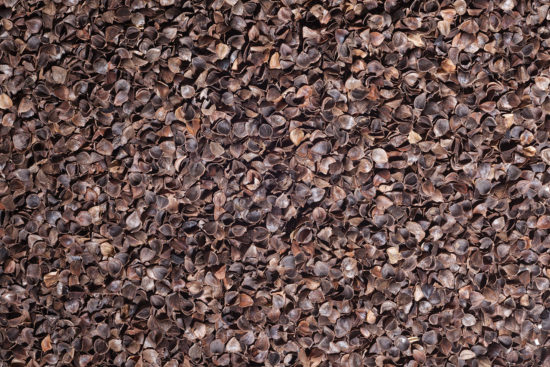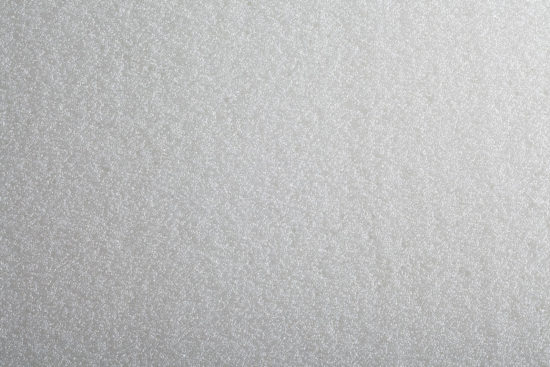Know Your Seats
Ah, the zafu. In the Western world, it’s the most ubiquitous of meditation seats. For many meditators, this simple, round or crescent-shaped cushion allows a cross-legged posture where the knees rest effortlessly below the hips. Or, if you’re more comfortable in a kneeling position, you can turn the zafu on its short side and straddle it.
The consistency of the zafu depends on what it’s filled with, ranging in density from a firm pillow to a stiff bean bag (see below for more about cushion fillings).
Gomdens come from a different lineage of meditation than zafus, and were designed specifically with chair-bound lifestyles in mind. Having foam innards, they’re taller and don’t compress like some zafus, but rather stay flat, so your pelvis stays level, rather than angling forward. Your ankles can be loosely crossed in front of you, not directly under you, which reduces pressure on the ankles and knees.
Mini gomdens work well for travelers or children.
Bolsters and support cushions may not be the main attraction, but they still can be a big help. Yoga and meditation supply businesses sell specifically designed bolsters, but any small pillow around your house may work just as well.
The largest is the zabuton (or flat mat), which is placed under a zafu (or gomden, or chair…) to cushion the lower body. Smaller bolsters and cushions can be used with any other seat: adding height to your zafu or gently tilting the pelvis forward in a chair. You can even put a pillow on your lap to rest your arms on, taking pressure off your shoulders.

Benches are the firmest of all seat options (aside from hard chairs). Some types of bench allow you to meditate kneeling. Physical therapist and meditation teacher Elizabeth Deboo notes that this bench tilts the pelvis forward to uphold your spine’s natural curve, making this no-give seat more easeful than you might expect. You may want a bolster under the knees or ankles.
Other benches come with cushions, and some sit higher off the ground to accommodate longer or bigger legs. You can sit cross-legged on these, as on a gomden.
Chairs make for excellent meditation seats, particularly for meditators who are stiffer or have pain or injuries in the back, hips, or knees. And fortunately, almost any chair you have can be adapted to suit your body. A firm back and seat is good—you can add a pillow or blanket for comfort, but nothing so squishy that it’s hard to sit up straight.
If you notice any strain on the shoulders or lower back, either armrests or a bolster will help by supporting your arms. Finally, make sure the chair’s height is right for you. Deboo says she checks three things: “Are the feet flat on the floor? Are the hips and torso forming a 90-degree angle? Are the feet and ankles forming a 90-degree angle? That foundation makes for a really nice stack of the spine.”
What’s inside?
KAPOK
What it is
Kapok is a cotton-like fiber from the seedpod of the kapok tree. It has been the padding in zafus for thousands of years.
What it feels like
Though it’s soft and airy, when stuffed tightly into a cushion, kapok creates a surprisingly sturdy surface. A kapok-filled zafu will elevate your hips more than a buckwheat cushion. Over time, the kapok will compress, but most cushions are zippered so you can refill them.
Why use it
If you want stability in your seat, rather than shift ability, kapok will do the trick. It’s also the best filling if you like to straddle your zafu (either round or crescent) with your hips lifted higher.

BUCKWHEAT
What it is
More precisely, it’s the hull of the buckwheat kernel that also forms a popular filling for zafus.
What it feels like
The texture is very fine and moveable, like a soft hill of sand. Imagine you’re on the beach, listening to the gentle whoosh of waves (the second part may be wishful thinking…).
Why use it
You’ll love buckwheat filling if you want a cushion that contours to your body, while also letting you shift around when sitting crosslegged—or if you’re shorter or very flexible, thus requiring less distance between the ground and your bum.

COTTON
What it is
This is natural cotton batting like you’d find in a pillow, often pre-consumer recycled.
What it feels like
Found in the zabuton and in many support cushions, cotton provides a soft, slightly bouncy padding (and insulation from cold floors), so no part of you will be ungrounded.
Why use it
Versatility is the name of the game: Grab a cottonfilled cushion if you find your feet or ankles uncomfortable resting on the floor, or if you’d like extra lift or padding in any area. Cotton-filled zafus are inexpensive, but less durable than buckwheat or kapok.

FOAM
What it is
Foam is a lightweight, spongy, man-made material.
What it feels like
Found in gomdens and in some bolsters, foam provides a flat, firm surface that still has a slight give to it.
Why use it
A foam seat may be ideal if more height and a soft, yet stable surface work well for you.

A Perch with Purpose
Sometimes as meditators, the last thing we’re inclined to pay attention to is how we’re sitting. It can be tempting to ignore the physical side of practice and focus only on the workings of our mind. Isn’t the body just tagging along for the ride? Not so. We meditate with the body and mind as one unit. When we try to ignore our body, or to literally bend it to our will in meditation (cramping our legs under a too-short cushion, straining to keep the hips above the knees), we find our body and our state of mind aren’t easily compartmentalized. If our body is uncomfortable, it has a way of nagging at us, holding our attention and causing us to tense up—thus making the discomfort even worse. We’re able to be more naturally attentive when our bodies are supported and in alignment. And while healthy posture looks similar for most, what people need varies widely in terms of the cushions, chairs, or props that allow us to hold that position with ease.
Knowing the various options for meditation seats and bolsters will serve you well for two reasons. First, comfort is a significant factor in whether or not you’ll keep up your practice. Second, and just as important, what you find comfortable will shift over time. The body is constantly in flux, just as the mind is. A well-made zafu may cost a little more, but it can last for decades, and you can adapt it in countless ways as needed. You can make your seat taller with a bolster, add a zabuton or extra padding under knees or ankles, or use it as a footrest when you meditate in a chair. It’s a good idea to talk with a meditation teacher who’s qualified to advise you regarding particular physical concerns.
“We’re able to be more naturally attentive when our bodies are supported and in alignment.”
Especially when you’re learning to meditate, the intention to be attuned to your body will help you deal with the inevitable cramps and aches of seated meditation practice. Elizabeth Deboo, a physical therapist and meditation teacher, recommends that when you notice discomfort in any area of your body, first identify where you feel the sensation. Then take a few deep, slow breaths. It’s normal for the brain to zero in on what feels unpleasant. See if you can instead shift or expand your attention into the space around you. “As you calm down, your nervous system calms down, and the tension in your body is going to soften,” says Deboo. “If it doesn’t soften, and it’s the only thing that you can become aware of,” then it’s probably best to adjust the way you’re sitting.
With this gentle method of inquiry, you can find a healthy balance between getting comfortable and perhaps, gradually, creating the potential for more spaciousness in your seated posture. Deboo has noticed some meditators struggling to push through pain, saying to themselves, “Even if I’m not comfortable, I should probably just endure this.” But, she says, it’s more constructive to work with your body. She emphasizes that you “can create the space—meaning body space and meditation space in your environment—that works, and that makes you want to come back to it.”
Supporting your body, when you’re meditating and when you’re not, is a meaningful act of self-compassion. It’s also an opportunity to let go of resistance and comparison (including any lingering mental images of graceful gurus who, by all appearances, were born sitting cross-legged). There really is no ideal to strive for. When you approach your practice with a spirit of acceptance and curiosity, your expectations don’t carry so much weight. Then you can deeply explore what it’s like to be here: in your seat, in this moment, just as you are.



